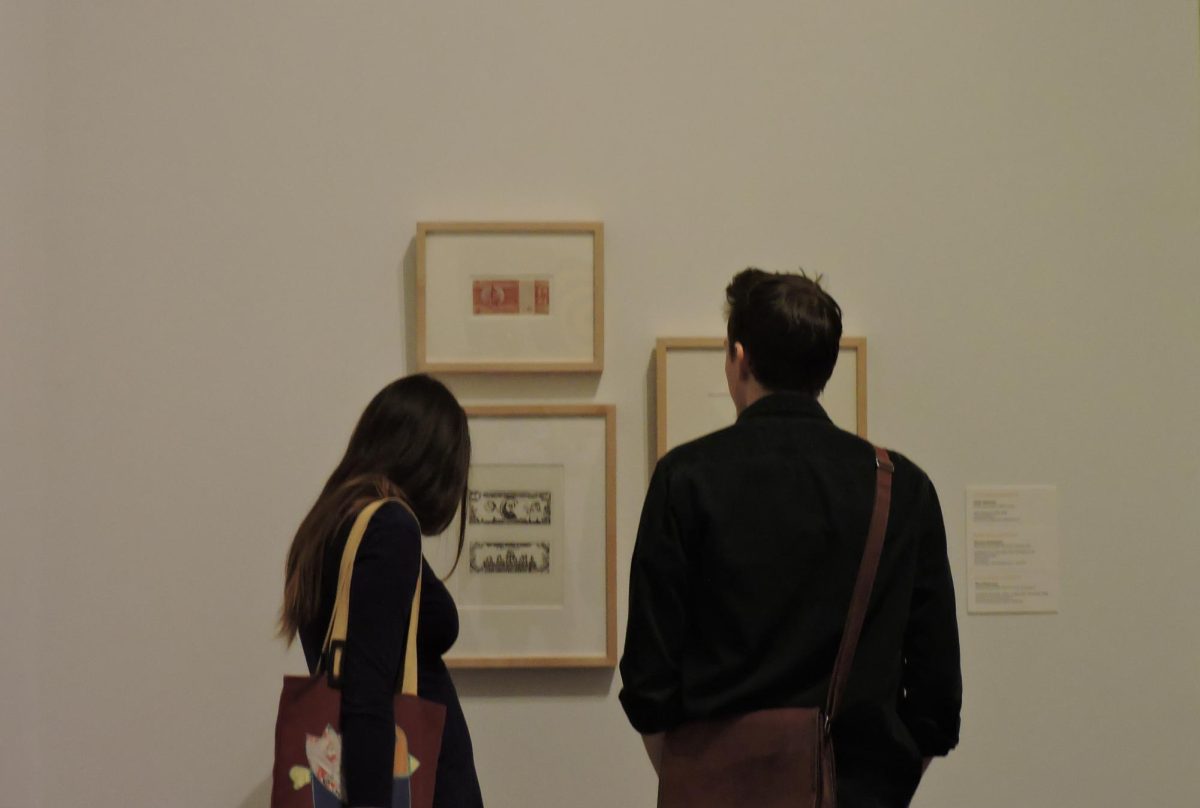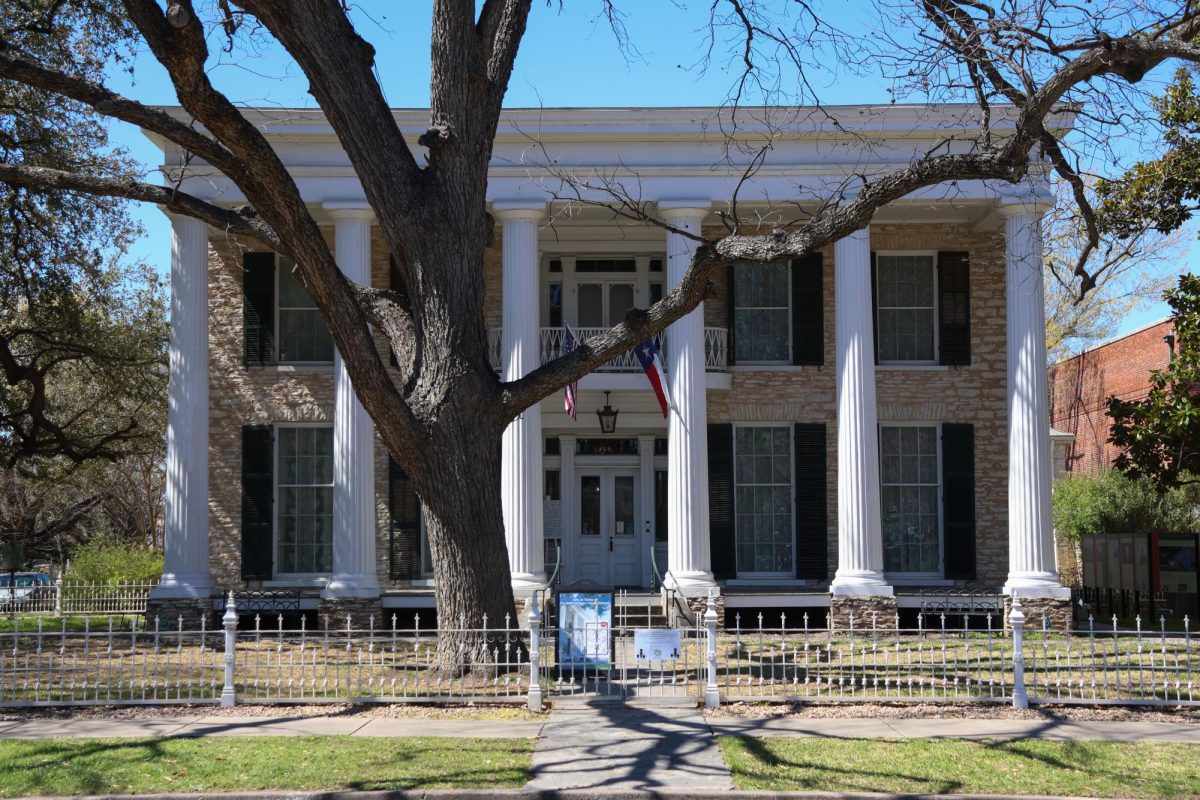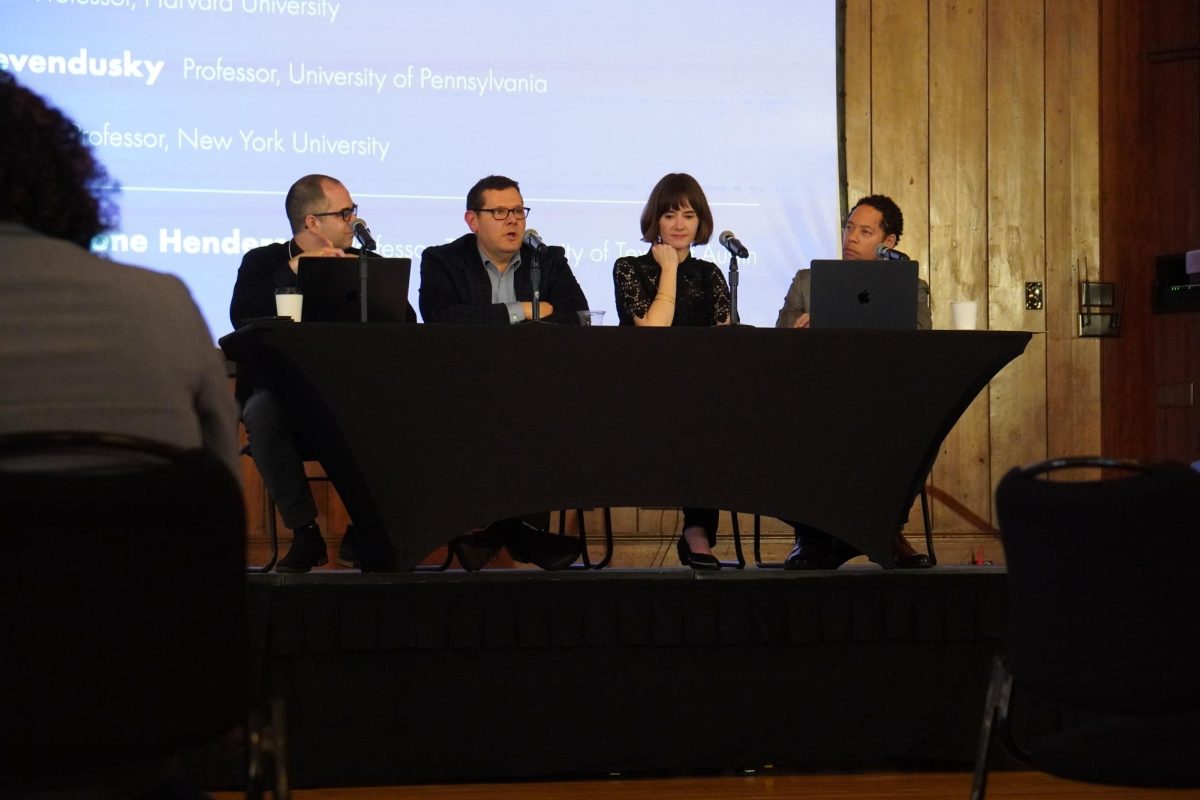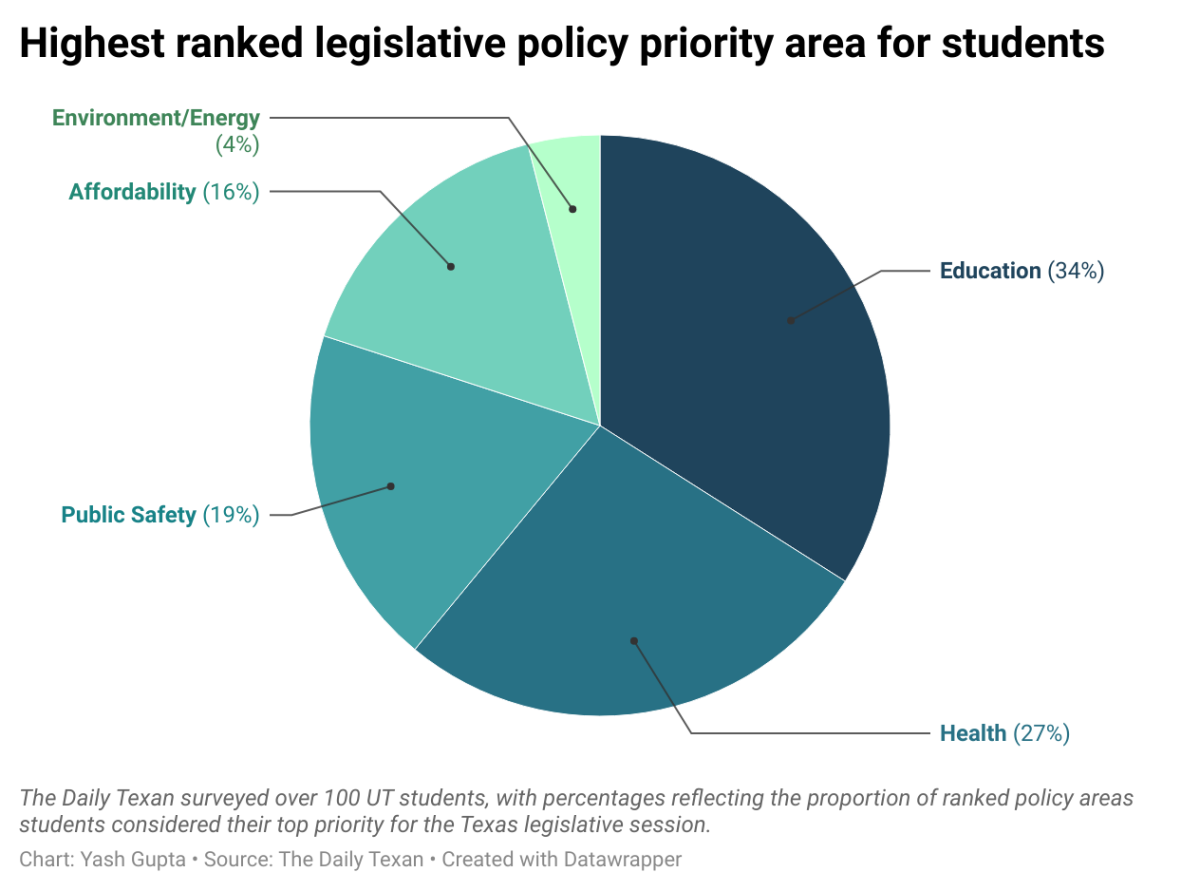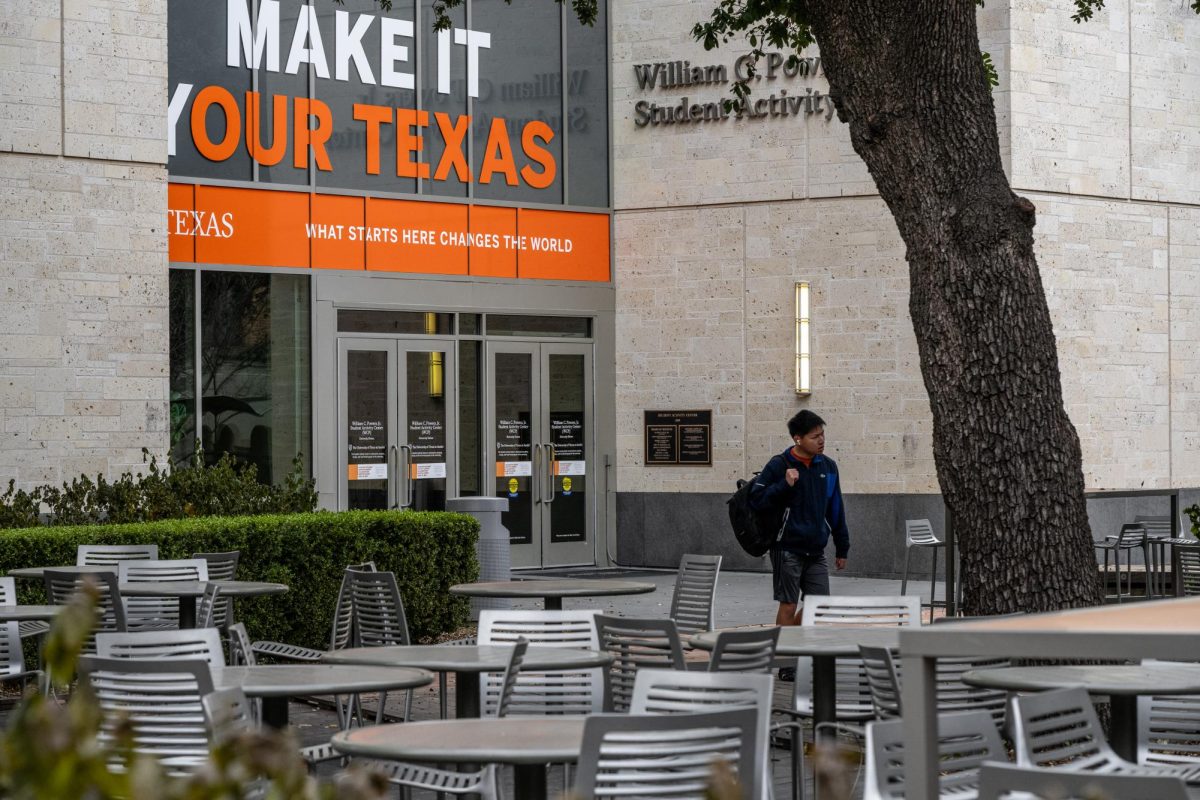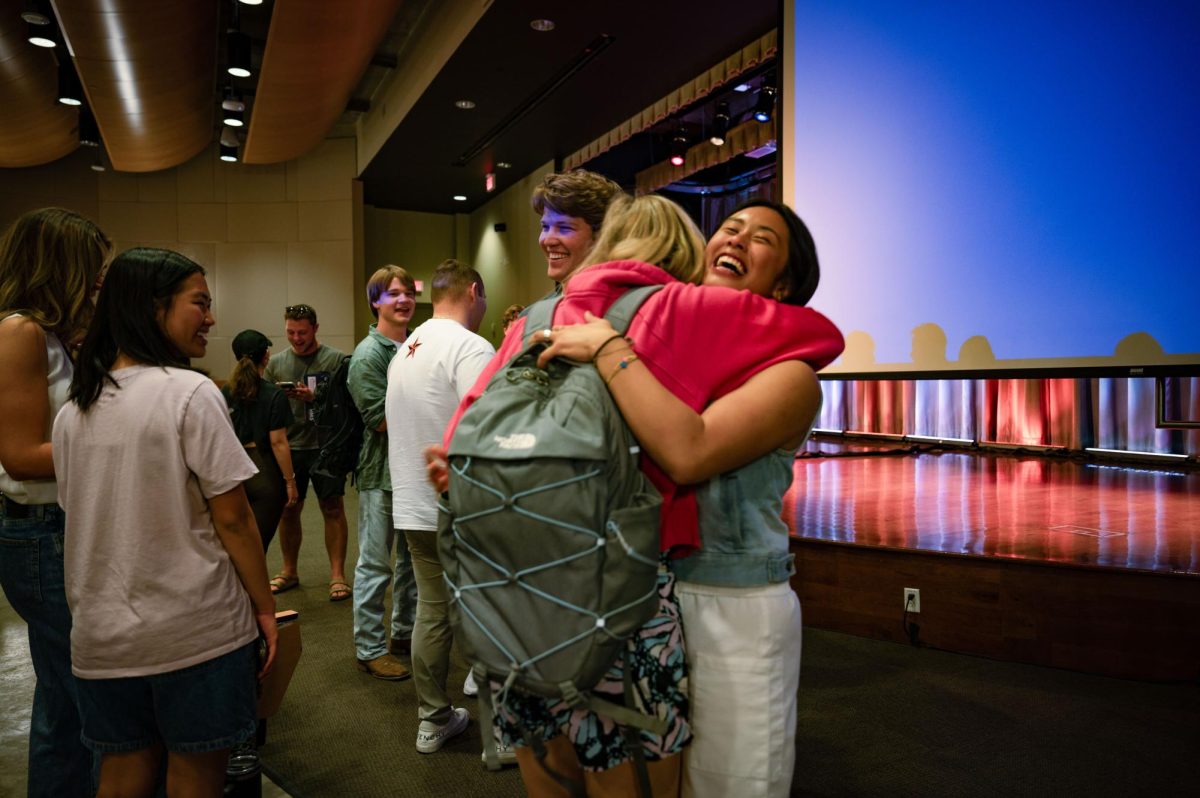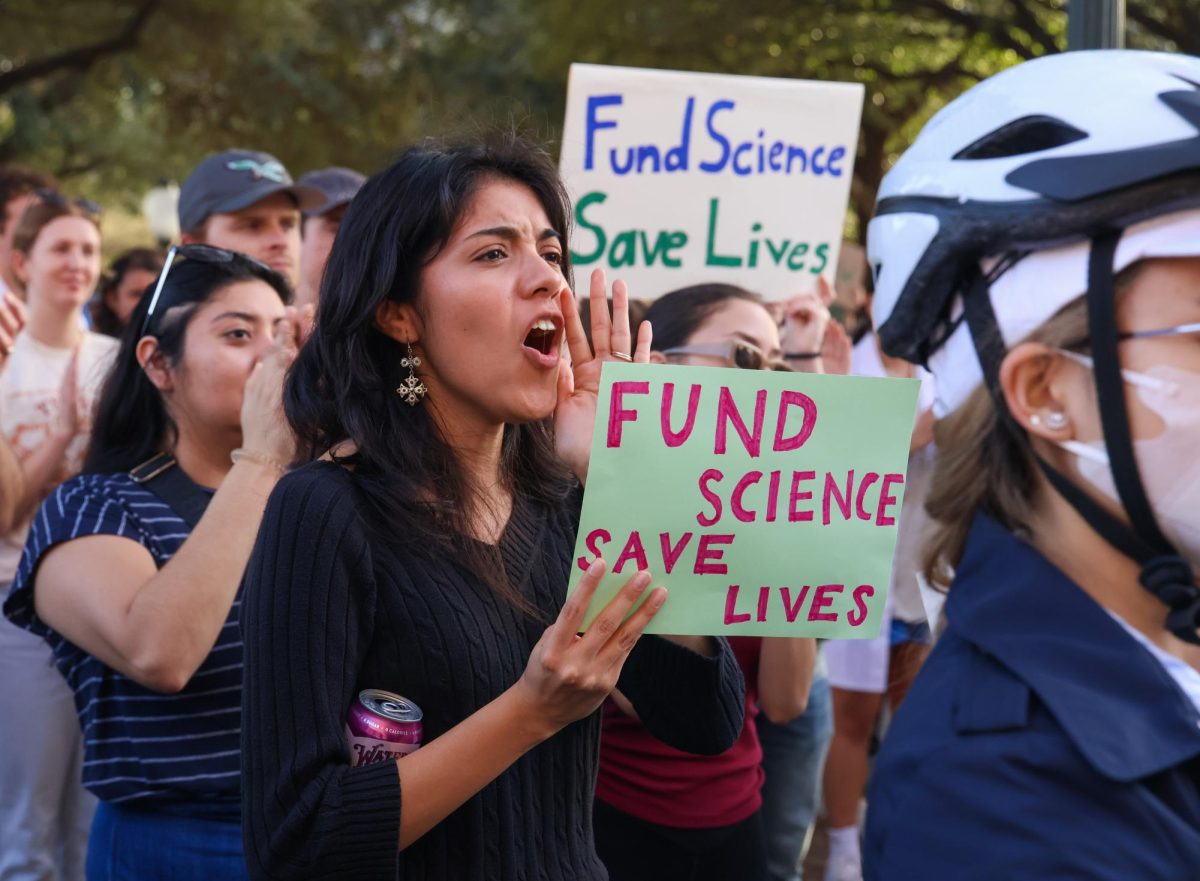In the Blanton Museum of Art’s most recent exhibit, “If the Sky Were Orange: Art in the Time of Climate,” artists, writers and climate scientists explore the intricacies of the ongoing global climate crisis through visual pieces.
Writer Jeff Goodell curated the exhibit, open to the public from Sept. 9 to Feb. 11, 2024. Goodell’s featured writings, some of which are released in his latest book “The Heat Will Kill You First: Life and Death on a Scorched Planet,” primarily focus on environmental issues.
“I think art is a very powerful kind of medium and there hasn’t been a lot of art that has looked at the climate crisis,” Goodell said. “I felt like (the exhibit) was really an opportunity to think about that and think about ways that art can communicate about this that journalism and science really can’t.”
Though part of the exhibit includes pieces explicitly concerning climate change, it also features works coupled with writings from environmental scientists that intend to connect art with science, Goodell said.
Carter Foster, deputy director of curatorial affairs, said he worked closely with Goodell on creating the exhibit.
“The purpose (of the exhibit) is really to use art to communicate about climate change and to engage a climate change expert,” Foster said. “The curatorial (team) knows about the art and we helped select the art, but the crux of the show is really pairing these writers with specific works of art.”
A piece in the Blanton’s collection called “Cloud World (#3)” inspired the exhibit’s title, “If the Sky Were Orange.” Created by Aaron Morse in 2014, the painting draws inspiration from Morse’s youth in Tucson, Arizona, and the dramatic scenery of the Sonoran Desert.
“It’s always cool when something I’ve made is useful for someone else, even years later,” Morse said in an email. “I don’t think the meaning of the artwork has changed so much, but the context of an exhibit exploring climate change offers an additional lens.”
As an artist interested in the environment, Morse said art enriches the dialogue about climate change and makes viewers more thoughtful.
Foster said visitors can learn the most by observing all of the exhibit’s features.
“If people take the time to read all the texts, it greatly enhances their understanding of what the art is and makes them think about the art in a very different way,” Foster said. “But also makes them think about all the issues around climate change.”

